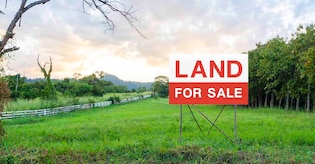How to Find Cheap Land: A Practical Guide
Buying land can be one of the smartest investments you’ll ever make. Whether you’re intending to build a home, start a farm, or simply just hold land as being a long-term asset, finding affordable property is often the first challenge. Cheap land does exist—you simply need to know where you should look and what to watch out for.
1. Start by Defining Your Purpose
Before you start searching, clarify the reasons you want the land. Your purpose will determine location, size, and features. For example:
Homesteading or farming: Look for rural plots with fertile soil and water access.
Recreational use: Wooded or off-grid areas could possibly be perfect.
Investment: Choose land near developing regions with growth potential.
Future home building: Check zoning laws, road access, and utilities.
Knowing your goals helps you avoid buying land that doesn’t meet your requirements.
2. Explore Rural and Less-Populated Areas
Land prices in cities and suburban areas will often be too high. To find cheaper land:
Look in rural towns or counties with low population density.
Search in regions which are not yet developed but may grow in value as time passes.
Consider areas with longer commutes—distance from major cities usually lowers the purchase price.
3. Use Online Land Marketplaces
Several websites focus on listing land for sale at different price points. Popular options include:
LandWatch
Land And Farm
Zillow (filter for land only)
LandFlip
Craigslist (local landowners sometimes list directly)
Set your filters for lowest price first and explore listings regularly.
4. Check County Auctions and Tax Sales
One of the best ways to find cheap land is by tax lien and foreclosure sales. When homeowners fail to pay taxes, counties often auction the land at discounted rates. Keep in mind:
Auctions could be competitive.
Some properties may have restrictions, unpaid taxes, or lack road access.
Always research before bidding.
Contact your county’s tax assessor or treasurer for upcoming auction schedules.
5. Contact Local Landowners
Not all land is listed online. Sometimes the lowest priced deals result from direct negotiation with landowners. Drive around rural areas to check out “For Sale by Owner” signs, or talk with locals who may know of accessible plots.
6. Consider Land Without Utilities
Land that lacks water, electricity, or road access tends to be much cheaper. If you’re ready to go off-grid or invest in adding utilities later, you save thousands upfront. Just make sure zoning laws allow your intended use.
7. Be Flexible with Location
The more flexible you might be, the cheaper land you can find. For example:
Land inside the Midwest or Southern U.S. is generally cheaper than coastal areas.
International buyers will find affordable land in countries with lower real estate property demand.
Avoid tourist-heavy or high-demand regions if you would like real bargains.
8. Do a Full Property Check
Cheap land isn’t often a good deal. Before purchasing:
Check zoning laws (some land is restricted to agricultural or recreational use).
Inspect the land for flooding risks, soil quality, and accessibility.
Verify legal ownership to prevent disputes.
Calculate hidden costs like taxes, permits, or utility installation.
Finding buy cheap land requires patience, research, and flexibility. By exploring rural areas, checking county auctions, and ultizing online resources, you'll be able to uncover hidden gems that fit your budget. Remember: the least expensive land isn’t always the top deal—make sure it meets your long-term needs before committing.